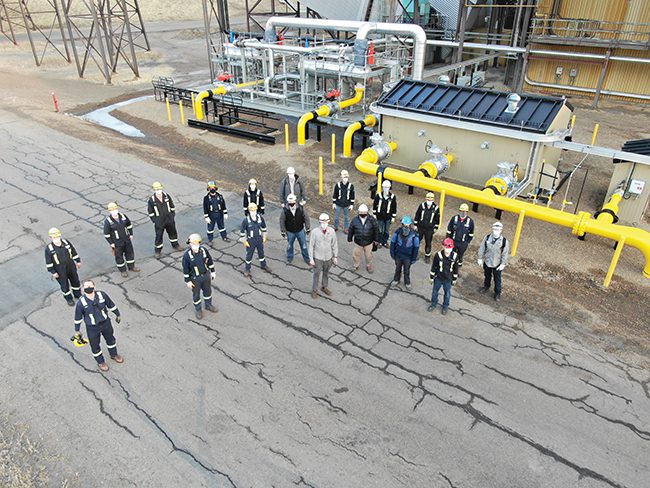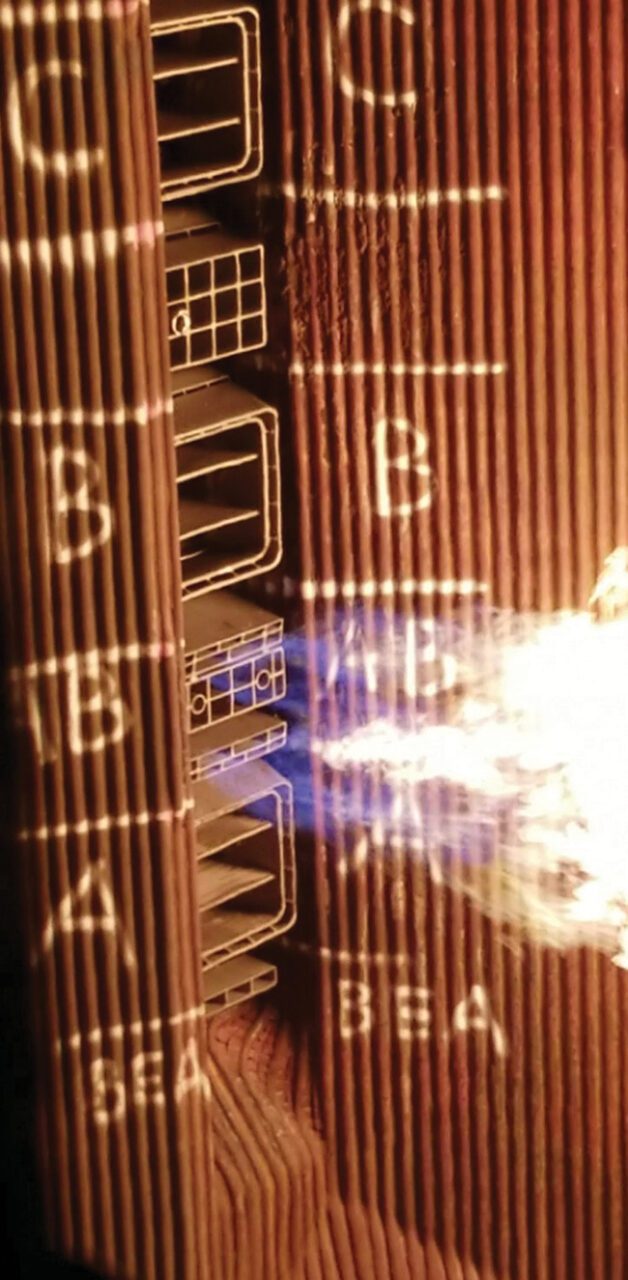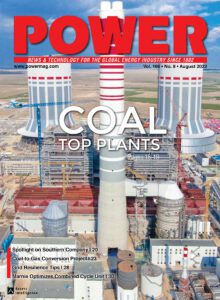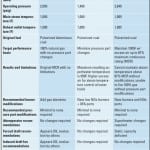A project executed from conception through commissioning with the ideals of shared risk and shared success offers a unique approach to project execution, which could be replicated to keep other power plants in operation. The units were upgraded to state-of-the-art technology and a cleaner fuel with substantial reductions in both NOx and CO2, while also optimizing the plant heat rate and efficiency to allow these units to remain competitive even in the age of combined cycles.
With two large coal-fired generating stations nearing end of life, new environmental regulations on the horizon, and tax on carbon emissions ratcheting up, Heartland Generation Ltd. (formerly ATCO Power) had a decision to make that would affect the company’s workforce and assets at two large Alberta, Canada, facilities. Battle River Generating Station hosts Unit 4, a 155-MW single-furnace tangentially fired boiler originally commissioned in 1975, and Unit 5, a 385-MW twin-furnace tangentially fired boiler originally commissioned in 1981. Sheerness Generating Station hosts, Unit 1 and 2, which are both 400-MW twin-furnace tangentially fired boilers originally commissioned in 1986 and 1990, respectively.
With a predicted 55% decrease in NO x emissions and 45% decrease in carbon emissions, conversion to natural gas aligned with environmental objectives. Additionally, a reduction in carbon emission intensity from these facilities would also permit life extension under the federal Regulations Limiting Carbon Dioxide Emission from Natural Gas-fired Generation of Electricity.
From an economic standpoint, the expiration of the power purchase arrangements (PPAs) in Alberta meant that carbon levies previously passed through to the owners of the PPAs, would now land with the generators. Remaining a coal-fired unit under this change would create an increase of 2.825 cents per kWh, representing a 340% increase in the carbon tax portion of the variable operating expenses. With renewable energy generation expanding in the province, maintaining a competitive advantage for reliable, and more flexible, generation that offers voltage and frequency regulation for the Alberta energy grid was becoming increasingly difficult.
Engaging in the Process
After reviewing several potential projects and available technologies, Heartland became excited about the prospect of a coal-to-gas conversion project at both facilities. Following the development of a detailed specification, Heartland received several project proposals, discovering that submitted proposals were too costly to satisfy the company’s economic criteria. With the competitive Alberta energy market, and an expiring PPA, it was unlikely that a fuel conversion would be commercially viable for Heartland at the estimated cost to execute.
The future of these assets and the rural communities they support became tenuous. The town of Hanna (Sheerness station) and the village of Forestburg (Battle River station) are both keenly reliant on Heartland as a major employer; a permanent shutdown would be devastating to the local economies.
The tender process was terminated, and the previously developed project specification was abandoned. At this point, Heartland approached Fossil Power Systems (FPS), a small Canadian company that had previously executed successful projects at Heartland’s Sheerness Station. FPS had considerable experience in executing gas conversion projects across North America, with more than 40 fuel conversion projects completed in the previous 10 years on a variety of boilers including pulp and paper, district heating plants, and power generation utilities, although never in an engineering, procurement, and construction (EPC) role. Despite this experience, many people questioned this approach, as this would be the largest project executed by Heartland since the original construction of the units, and it would be the largest project ever executed by FPS.
There was, however, a mutual trust between the companies. Heartland and FPS began working closely together to redefine the project and develop a contract with a risk-shared approach. Over several months, many design options were detailed and evaluated with respect to predicted performance, estimated cost, and potential risks.
Eventually, FPS and Heartland agreed on a design strategy and performance guarantees, resulting in Heartland contracting FPS in 2018 to convert 1,340 MW of coal-fired generation to natural gas. During this project, Battle River Unit 5 would become the first 100% coal-to-gas conversion project of this magnitude to be executed in Canada.
Teamwork Makes the Dream Work
Although both Heartland and FPS lacked direct conversion experience, the combined team (Figure 1) brought forth ingenuity and a willingness to adopt an alternate approach to the execution of this project compared to previous conversions. Heartland and FPS agreed on a number of uncommon strategies and innovative technical solutions to ensure the viability of the project. This tactic was successful due to mutual trust between the two companies and the shared objective of project success above all else. From a commercial standpoint, although the following strategies may sound like common sense, they are seldom employed in such large industrial projects.
 |
|
1. Heartland Generation Ltd. and Fossil Power Systems (FPS) developed a great partnership, which ultimately led to successful outcomes. Several members of the project team are pictured here near one of the units. Courtesy: FPS |
With no detailed project specification, there was no need for a third-party consultant. The project was executed in its entirety by the same engineering team (vendor and client) that had initially defined the project, making any benefit to involving a third-party negligible. As compared to similar projects, this decision reduced the total execution cost substantially without compromising quality or final performance.
As a relatively small engineering and manufacturing company, the biggest project risk to FPS was the large construction component. FPS proposed to manage all construction on a “cost plus” basis, essentially offering to do the project at a reduced profit margin by having the client assume the risk of cost overruns. The project would be executed as a “modified turnkey,” with the books completely open on the construction portion.
Heartland also provided substantial assistance to FPS in the final commissioning of the system, enabling reduction of vendor manpower and project cost, and ensuring valuable training for the station workforce, who would ultimately be tasked with maintaining the new equipment. This also expedited the commissioning timeline by having a knowledgeable workforce familiar with the boiler and existing equipment.
The Optimal Combustion Air Design
Many technical challenges were encountered during the execution of this project. The team was tasked with ensuring a considerable decrease in both NOx and CO2, while also maximizing unit reliability, efficiency, and safety. Solving these challenges required balancing unit performance and reliability, NOx and CO2 emissions, project cost, and schedule, often highlighting that the potential solutions to address one challenge would have a negative effect on other project goals.
One of the technical challenges faced when converting boilers from coal to another fuel is determining how to replace the air from the primary air (PA) fans, as the majority of these boilers were designed with the forced draft (FD) fans capable of only providing the additional required secondary combustion air. Pulverized coal-fired boilers typically utilize a separate set of PA fans to transport the coal from the pulverizer to the boiler, and this transport air is then used as combustion air once it enters the furnace. During full-load operation of a coal-fired boiler, the PA fans typically provide 30% to 35% of the required combustion air.
There were several options available to achieve the combustion air required to operate the unit at 100% on natural gas. The FD fans could be replaced or upgraded, or the PA fans could be ducted into the secondary air system; however, both of these options presented a substantial cost with a number of advantages and disadvantages. A third option, although the highest cost option, would be to retain the PA fans with new ducting installed to distribute air to a new separated overfire air (SOFA) location. Although this option would require the design and installation of new ducting as well as significant boiler modifications, it would provide the additional benefit of further NOx reduction from the effect of the SOFA system.
A fourth option was evaluated and ultimately selected, which was to retain the PA fans in service and continue to direct primary air through the coal mills and pipes as needed to augment the combustion air. This would allow 100% unit load with natural gas, but with no additional cost to upgrade the air system. As there was no known history of this having been attempted before, there was uncertainty regarding the effect it may have on performance; however, FPS was confident that there was adequate margin in the design, and performance modeling demonstrated that this had a negligible effect on NOx.
Boiler Modeling Improves Operation
Reducing NOx emissions is relatively straightforward, with many proven methods. However, there is difficulty in implementing them to optimize NOx reduction without decreasing unit performance, which could result in an increase of CO2 emissions, if additional fuel firing is required. To determine the optimal solution for each of these boilers, FPS worked closely with R-V Industries (RVI) and Sirois Engineering and Consulting (Sirois), both US-based firms with considerable experience in NOx reduction projects, and boiler modeling and performance prediction. The correct location and sizing of the gas-firing equipment was deemed critical and was unit-dependent—each boiler had to be modeled to ensure the design was capable of achieving steam flow, pressure, and temperature, whilst adequately reducing NOx emissions and avoiding issues around localized heat flux, which could potentially lead to departure from nucleate boiling.
It was recognized that every boiler is unique, possibly requiring a custom solution to optimize unit performance and emissions reduction. Even though three of the four Heartland units were very similar (roughly 400-MW, eight-corner, tangentially fired designs), each boiler for this project required a slightly unique solution to ensure optimal performance. However, the knowledge and experience gained by FPS throughout this and their previous conversions has demonstrated the following design strategies consistently offer a performance benefit on all tangentially fired boilers:
- Having individual gas-firing control on an elevation basis (Figure 2) provides better unit turndown and allows firing to be biased between elevations to optimize performance across various load points.
- Flame scanner performance is extremely important for both safety and reliability. It is imperative that the flame scanners be a fiberoptic design, capable of ultraviolet (UV) scanning.
- Tangentially fired boilers have traditionally been built with oversized windboxes. Consideration should be given to the installation of Venturi to restrict air flow through the windbox. This allows for improved control of the windbox-to-furnace differential pressure (DP), which is key to optimizing combustion and unit performance.
- Over time, many coal-fired boilers experience localized overheating and slagging, which can result in damage to the windbox tilt system. It is imperative that the full operation of the windbox tilts is restored as part of a fuel conversion project. This is not an area to cut costs as it is of critical importance.
- It is important to install properly sized close-coupled overfire air (CCOFA) compartments with separate tilt control. The CCOFA compartments and dampers must be sized to allow introduction of adequate overfire air for NOx reduction, while a separate tilt control on these elevations also allows for maximum separation between the firing zone and the overfire air zone, thereby providing additional NOx reduction.
- Better NOx reduction has been observed from lowering tilts than from increasing CCOFA airflow. The focus should be on ensuring correct gas/air distribution to the firing elevations to ensure steam temperatures are achieved. With the burners tilted up significantly to achieve steam temperatures, increasing the amount of overfire air does not significantly reduce
- NOx on its own. If the boiler model indicates that the burners may need to be tilted up significantly, consideration should be given to adding SOFA to assist with NOx reduction.
 |
|
2. Having the ability to adjust air and fuel based on elevation within the boiler allows better unit turndown and helps optimize performance. Courtesy: FPS |
The reduction of CO2 emissions from fossil fuel–fired boilers is an important part of ensuring long-term viability in meeting the commitment to greenhouse gas reductions. Although natural gas is still a hydrocarbon fuel, the resulting CO2 emissions are significantly lower than with pulverized coal. Unit efficiency is also important, as any decrease in required fuel firing will also result in a corresponding reduction in CO2 emissions.
Performance Results and Lessons Learned
On these projects, an average NOx reduction of 63% and an average CO2 reduction of 51% (from 2003 levels) was achieved without the need for SOFA or flue gas recirculation (FGR). There were a number of lessons learned during execution of this project that may be of assistance to others on future projects including:
- ■ Consideration should be given to improving air heater performance, specifically, reducing leakage. These projects have proven that this work provides an excellent return on investment when compared to other possible unit upgrades.
- ■ A properly designed gas reducing station is critical to overall project success, especially if multiple boilers are using the same gas supply (Figure 3). Focus should be on adequate redundancy, stability during steady operation, responsiveness in the event of a unit trip, proper design of overpressure protection, and proper design of piping runs to minimize velocity/turbulence through the station.
- ■ When conducting baseline testing to use for boiler modeling, care should be taken to ensure the boiler is as clean as possible to provide data more in line with natural gas operation. The original boiler design data may be disregarded in favor of baseline data from a return to service following a major outage.
- ■ On a twin-furnace tangentially fired boiler, there exists an inherent imbalance between furnaces. Consideration should be given to installing separate auxiliary air control on a furnace basis, rather than simply on an elevation basis as per the original design.
- ■ Sliding throttle pressure, with the turbine valves fully open at full load, provides improved efficiency and steam temperature control at all operating loads.
- ■ It should be assumed that there may be additional repairs required to the firing windbox inside the boiler. On this project, a drone was flown inside the boiler during a short outage, which provided excellent inspection opportunity and allowed the project team to estimate the time and cost of the required repairs while still early in the design stage. If this additional work had not been found until the outage, it would have undoubtedly increased the cost and time to repair.
 |
|
3. A properly designed natural gas supply system is vital to coal-to-gas conversion project success. Courtesy: FPS |
With both Heartland and FPS committed to managing the project as a cohesive team, this allowed the focus to remain on the desired project outcomes rather than contractual obligations as so often happens in these types of projects. Ellison Krismer, Heartland’s Thermal Maintenance and Engineering Manager, summarized the experience in this manner, “It was such a privilege to be involved in these projects. To forego the status quo and consider an approach that was unique in so many ways, allowed Heartland to remain competitive in an ever-challenging energy market. The conversions are a true demonstration of what can be accomplished with collaboration, trust, and the courage to try.”
The entire project from conception through commissioning was executed with the ideals of shared risk and shared success. This unique approach to executing a fuel conversion project has resulted in a significant life extension to these thermal plants, and provided a great benefit to the communities that support them, by upgrading to the latest technology and a cleaner fuel with substantial reductions in both NOx and CO2, while also optimizing the unit heat rate and efficiency to allow these units to remain competitive even in the age of combined cycles.
—Mark Donahue, P.Eng. was the FPS project manager for the Heartland coal-to-gas conversion projects. In nearly 27 years with FPS, Donahue has been the lead design engineer for more than 65 major upgrade projects. Norene Robinson, P.Eng. is the maintenance and engineering manager for Heartland Generation’s Sheerness Generating Station. Committed to thermal generation for over 20 years, Robinson fosters creative solutions to remain competitive in Alberta’s deregulated energy market.











